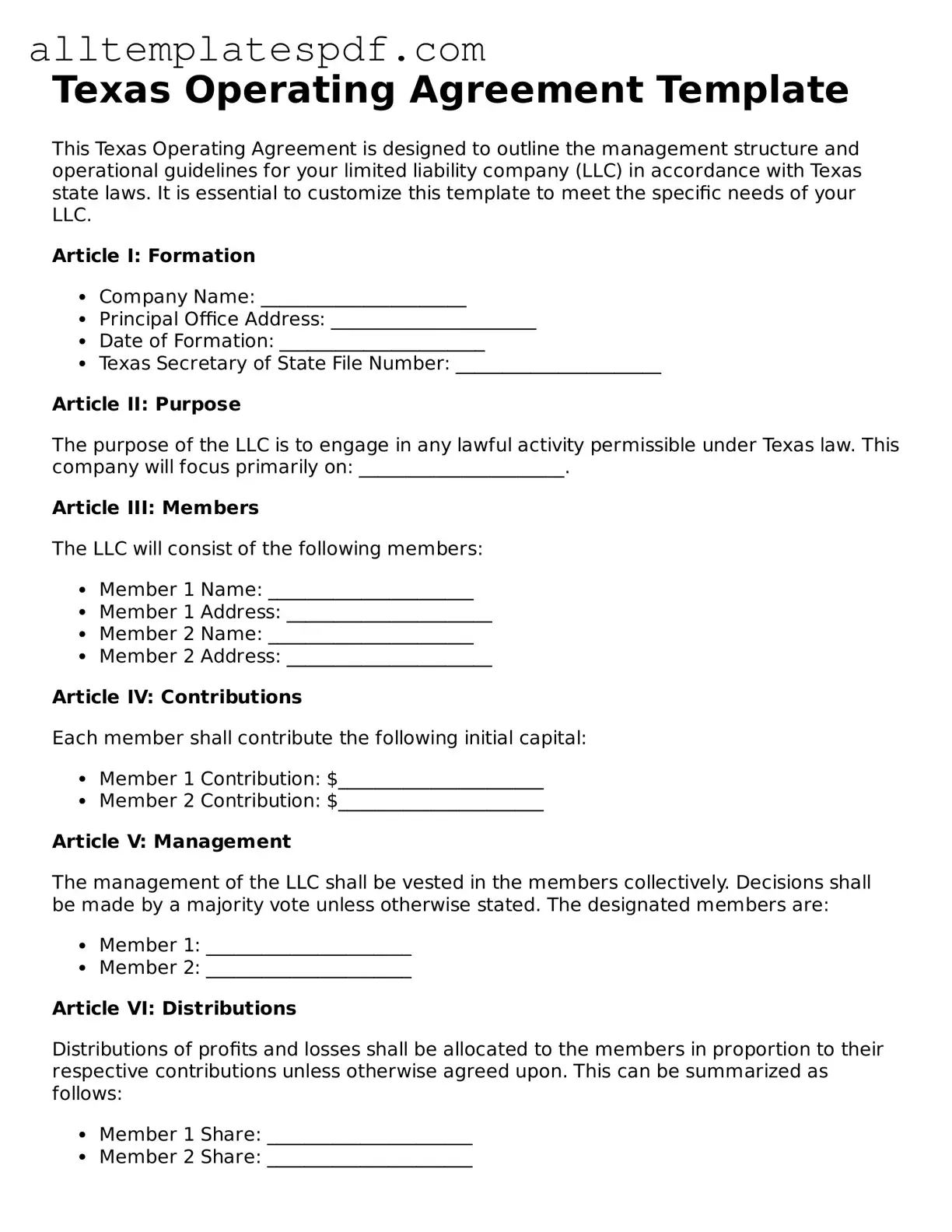Filling out the Texas Operating Agreement form is a crucial step for any business entity operating in the state. However, many individuals make common mistakes that can lead to complications down the road. Understanding these pitfalls can help ensure that your agreement is completed accurately and effectively.
One frequent error is failing to identify all members of the LLC. Each member's name and role should be clearly stated. Omitting a member can create confusion and legal issues later. All parties involved should be included to ensure clarity and prevent disputes.
Another mistake is not specifying the management structure of the LLC. Whether the company will be member-managed or manager-managed should be clearly indicated. This distinction affects how decisions are made and who has authority within the business. Neglecting to define this can lead to misunderstandings and conflicts among members.
Additionally, many individuals overlook the importance of outlining the financial arrangements in the Operating Agreement. This includes how profits and losses will be distributed among members. Without this information, members may have different expectations regarding their financial interests, potentially leading to disputes.
Moreover, some people fail to include provisions for handling member departures or additions. The agreement should address how new members can join and what happens when a member leaves. This foresight can save time and resources in the future, ensuring a smooth transition and continuity of operations.
Lastly, individuals often neglect to review and update the Operating Agreement regularly. As businesses evolve, so do their needs. Regularly revisiting the agreement allows members to make necessary adjustments and ensures that it remains relevant and effective. Ignoring this step can lead to outdated provisions that no longer serve the best interests of the business.
